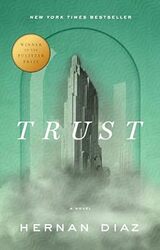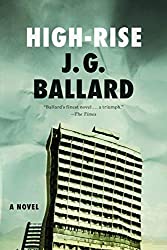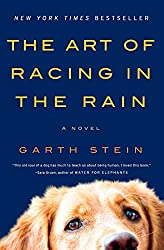
Rating: 7.9/10.
Novel set in 1920s New York focused on a wealthy finance family, and it’s broken up into four parts telling the story from different perspectives. The first part is a novel “Bonds” and we start off with the story of Benjamin Rask, who is a young man from an aristocratic family and turns out to be a genius at finance. He quickly develops into one of the most successful financiers on Wall Street, and he marries Helen Brevoort, who is also from an aristocratic family, but her family is in decline.
After they meet and get married, both are very intellectual but socially reserved people, so they find themselves a good fit for each other, and they take pleasure in reading and music. Benjamin Rask manages to short the market and profit massively from the 1929 crash, after which Helen becomes guilty about the economic crisis that the country is in and pursues various charity efforts. Her mental state deteriorates, and she finds herself in a sort of deep depression or some mental disorder.
Benjamin brings his wife Helen to the best possible treatment in a remote location in Switzerland, but he becomes impatient with the therapy that is progressing too slowly and stops the treatment, seeking a new one in Berlin with conversion therapy. Helen dies in the treatment process, ending the first part.
The second part is series of scattered notes by Andrew Bevel, who is a successful businessman, and his wife Mildred, who has poor health and enjoys books and music. We can see that this is essentially a parallel to the first story, except that Benjamin and Helen are replaced with Andrew and Mildred. The second part is scattered and rambling, containing details about the stock market, switches between topics abruptly, and many sentences are left unfinished.
The third section is told from the view of a young working-class woman working for Bevel called Ida Partenza and alternates between her younger self in the 1930s and her elderly self in the 1980s, long after the death of Bevel. As a young woman, Ida interviews for a job at Bevel’s firm and gets a position as a secretary, but finds out that she is tasked with writing the autobiography for Andrew Bevel. The reason for Bevel’s interest is because he finds the novel “Bonds” by Harold Vanner (the first part of the book), to be slanderous and wants the world to know a corrected version of his story. We see here that the first part of the book was a meta-novel within a novel.
Ida takes up this task very seriously and tries to write using the voice that Andrew Bevel commands. He orders her to write it in a way that portrays his financial achievements while portraying his wife Mildred as a simple-minded woman who he lost to cancer, not some kind of mental illness as suggested in Harold Vanner’s novel. However, he dies before Ida is able to finish this work, and the work remains unpublished. Decades later, the Andrew Bevel house is turned into a museum, and Ida, who is now an elderly woman, visits the museum which was formerly the house of her former employer, and goes through Mildred’s room and steals a diary from Mildred’s final days.
The fourth and last section is the diary from Mildred that was stolen and describes her point of view from when she was already quite ill and receiving hospital care in Switzerland. This section portrays Mildred as very intelligent and engaged in classical music and charities. More surprisingly, we find that she is actually the mastermind genius behind all of the financial victories that the world had attributed to her husband, Andrew Bevel, including the shorts and the crash of 1929. Shortly after this, she dies, which explains why Andrew was not able to maintain his success after his wife’s death. It is suggested that this version is the true account of the events that occurred, leaving the reader to reassess the previous narratives in a different light.
Overall, this was an interesting read involving the historical world of finance, with an intriguing twist of having four different narratives about the same event that captures how the same occurrence is experienced by different people, and how the perspective of the person writing it can distort reality for later readers who are trying to understand what happened.



